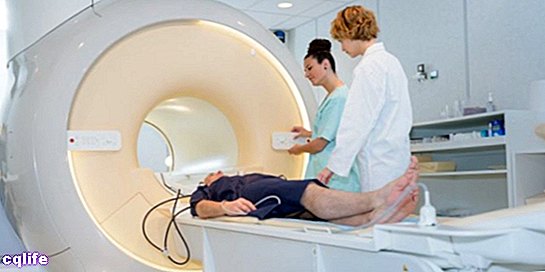- What is magnetic energy?
- History of magnetic energy
- How does magnetic energy work?
- Magnetic energy characteristics
- Advantages of magnetic energy
- Disadvantages of magnetic energy
- Examples of magnetic energy
We explain what magnetic energy is, its history, advantages, disadvantages and more characteristics. Also, how it works and examples.

What is magnetic energy?
The magnetism It is a phenomenon associated with the electromagnetic force, one of the elemental forces of the universe. It affects to a greater or lesser extent all existing materials, but its effects can be evidenced mainly in certain metals, As the nickel, iron, cobalt and their different alloys (known as magnets).
This force manifests itself in the form of magnetic fields, capable of generating attraction or repulsion between the interacting elements, depending on their magnetic polarities: like poles repel, opposite poles attract.
Magnetic energy can be understood as the ability of the magnetic force to perform mechanical work, but we also refer to it when we talk about the energy that is stored in a conductive element or a magnetic field. This energy is capable of radiating through the space, even in the absence of a physical medium, through what is known as electromagnetic radiation.
Magnetic fields are formed by magnetic radiation. The light Visible, for example, is made up of electromagnetic fields and occupies just one strip of the electromagnetic spectrum. Depending on the properties of the waves that make up this spectrum, there will be visible light, ultraviolet radiation or infrared radiation, for example.
Magnetism, moreover, is a phenomenon with innumerable applications used by contemporary humanity, especially in its borders with the electricity, as in the case of motors, superconductors, alternators, etc.
History of magnetic energy

Magnetic energy was discovered by the human being on the antiquity. Magnetic phenomena are said to have been observed for the first time in the Ancient Greece, on the town of Magnesia del Meander, where the mineral of magnetite was particularly abundant. That is precisely where its name comes from.
The first student of magnetism was the Greek philosopher Thales of Miletus (625-545 BC). However, in Ancient China it was also studied in parallel, as evidenced by a mention of it in the Devil's Valley Master's Book from the 4th century BC. C.
Magnetism was widely studied in later centuries, both by alchemists, naturalists and religious, as by explorers and philosophers and especially after the invention of the compass in the thirteenth century. Furthermore, the magnetic field of the Earth It was discovered in Greenland in 1551.
However, it was not until the 19th century that the foundations of magnetism were scientifically revealed, thanks to advances in the field of physical, chemistry and electricity. Hans Christian Orsted, André-Marie Ampère, Carl Friedrich Gauss, Michael Faraday and especially James Clerk Maxwell, with his famous equations, played an indispensable role in this.
How does magnetic energy work?
Magnetism occurs due to movement from electric charges in interacting objects: if the charges present in two objects (for example two wires with current) move in the same address, objects experience an attractive force; but if they move in opposite directions, this force is repulsive.
Around the moving charges there will always be a magnetic field, generated precisely by the movement of these charges. If other moving charges get close to that magnetic field, they will interact with it. It is essential that charges are in motion for magnetic fields, forces or energy to exist. Charges at rest (stationary) do not produce magnetic fields or magnetic phenomena. Magnets have their "own" magnetic field due to the particular movement and orientation of the magnets. electrons within the atoms.
Magnetic energy can be produced by electromagnets, which consist of a wound electrical wire that covers a magnetic material, such as iron. It can also be produced by magnetizing susceptible materials, whether they are temporary (those in which the magnetic field is external and, therefore, weakens and disappears) or permanent.
Magnetic energy characteristics

Magnetic energy has a variable intensity, depending on the materials that produce it or the intensity of electric current that generates it. Due to the direction of movement of electrons, magnetic materials always have two poles: positive and negative. This is known as a magnetic dipole.
Although everything that exists is susceptible to a certain degree of magnetic response (the so-called magnetic susceptibility), depending on its degree of susceptibility we can speak of:
- Ferromagnetic materials. They are strongly magnetic.
- Diamagnetic materials. They are weakly magnetic.
- Non-magnetic materials. They have negligible magnetic properties.
Advantages of magnetic energy
Magnetic energy in the contemporary world is extremely advantageous, since its storage and production have very important applications for human life, for example, in the transport, medicine or industry of electricity generation
Many magnetic materials help make life easier for us, from the magnets we attach to the refrigerator, to the magnetic materials inside our computers and the alternator of our cars, through transformers and a whole series of modulators of electricity, which use magnets to manage it.
On the other hand, experiences with this type of Energy and applications to modern initiatives are more promising every day. They could come to approach us in the near future to clean energy sources.
Disadvantages of magnetic energy
The weak side of the use of magnetism is that naturally magnetic materials lack the necessary magnetic field intensity to mobilize massive objects or to transmit their energy indefinitely to others. systems. Therefore, the usual thing when using magnetism is the use of the electromagnet, which requires a constant input of electric power.
Examples of magnetic energy

Some examples of magnetic energy:
- The compass. Its metallic needle aligns itself with the Earth's magnetic field to constantly point north.
- Electric transformers. They are huge cylindrical boxes that are usually found in electricity poles and that operate internally through the force of several magnets, to modulate the flow of electrical current and make it consumable in our homes.
- Magnetic tomographs. They are medical devices used to send and receive electromagnetic waves through the body, which allow us to get an idea of how things are inside us without having to operate.
- Maglev trains. They are in operation in many first world countries, and are able to hold themselves in the air due to the repulsive thrust of electromagnets at their base.
- The Aurora borealis. Although indirectly, they are evidence of the power of the Earth's magnetic field, capable of repelling the solar wind (particles of solar plasma ejected into space). The lights that can be seen in the areas near the poles are these particles when they are skimming the atmosphere and traveling in the direction of the magnetic field without penetrating towards the planet.
